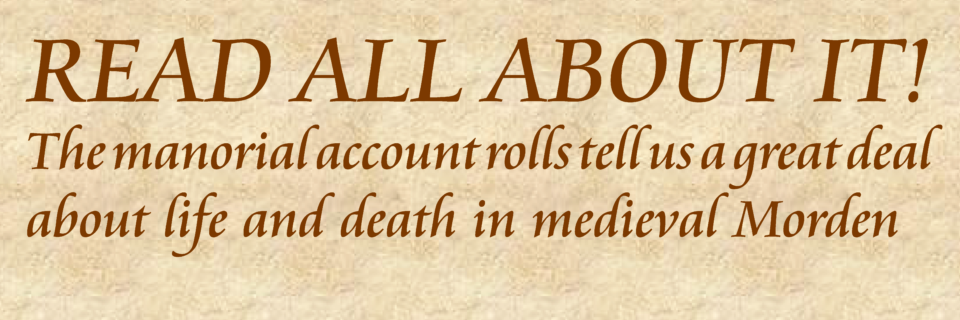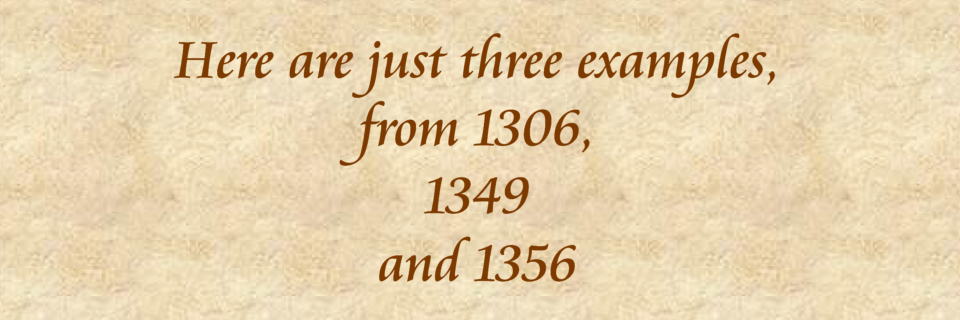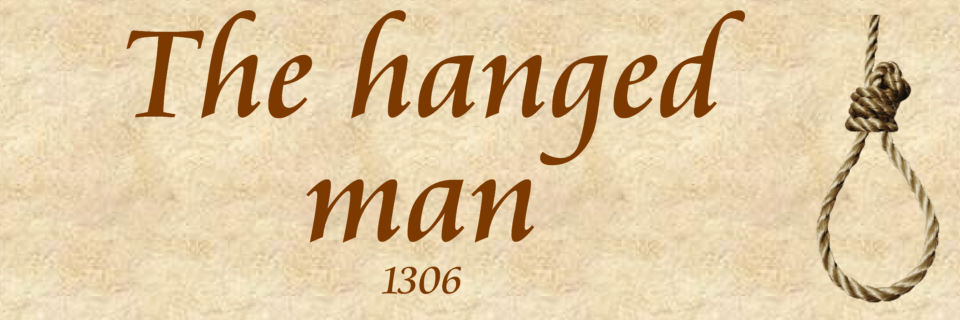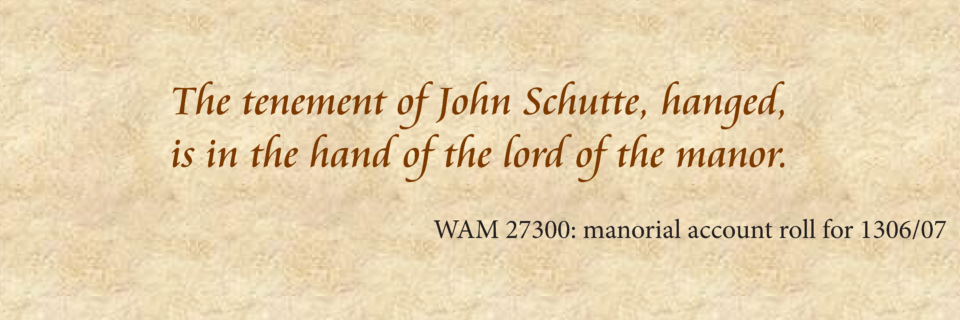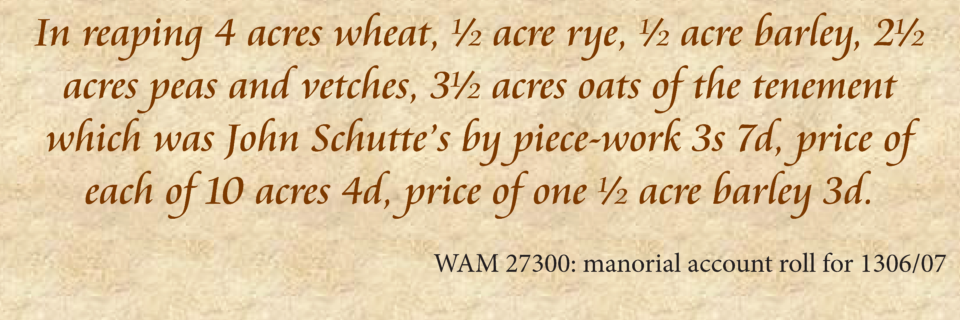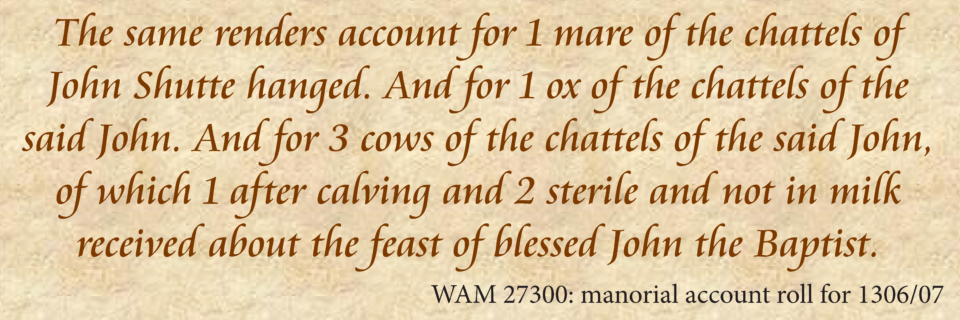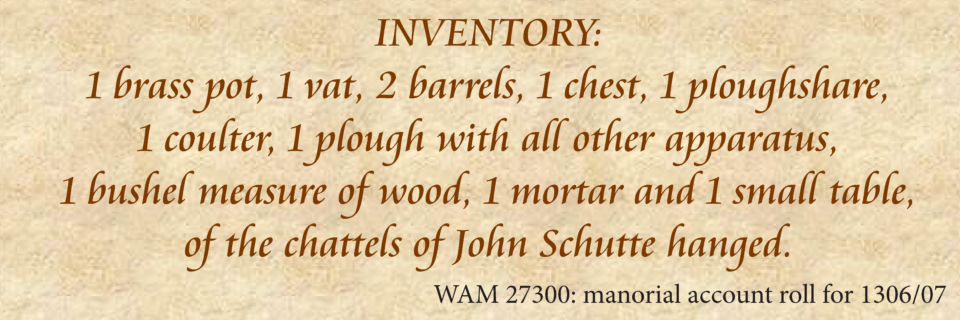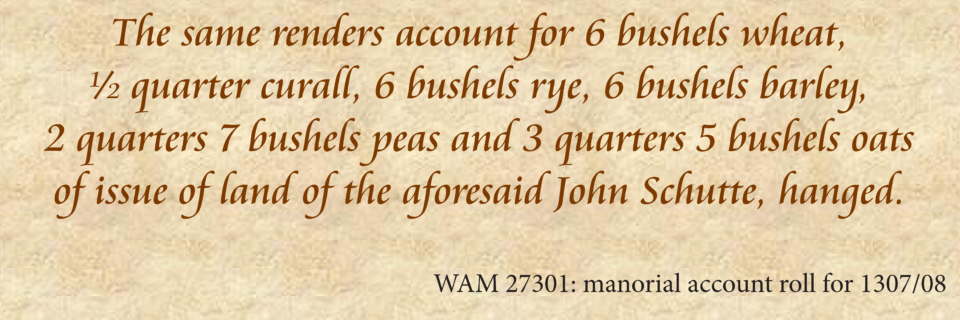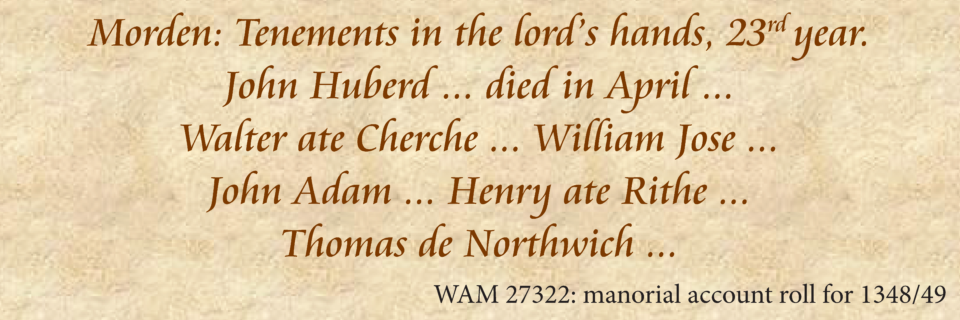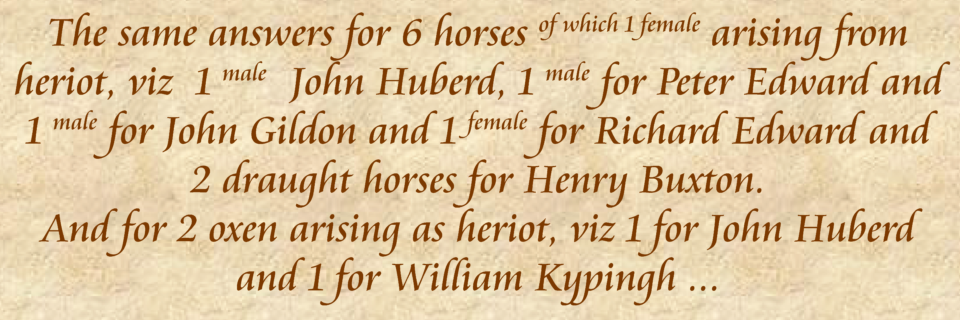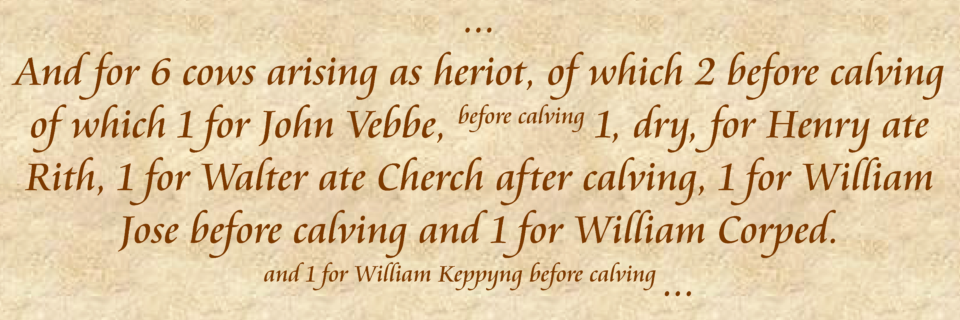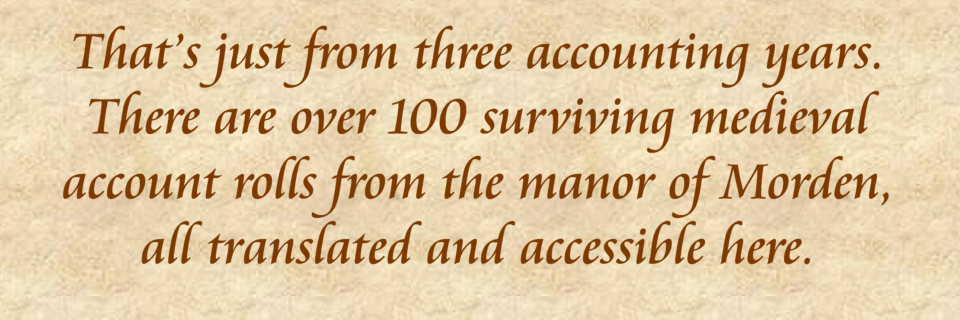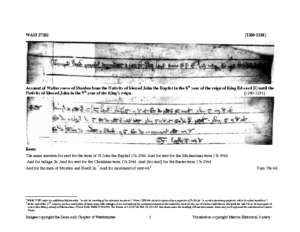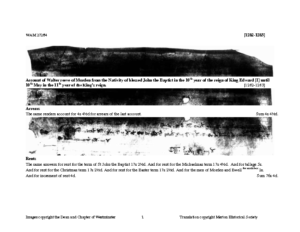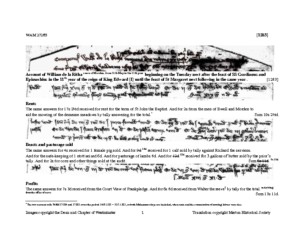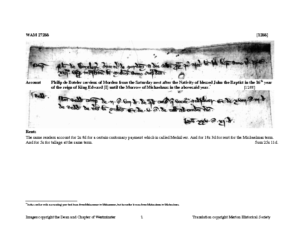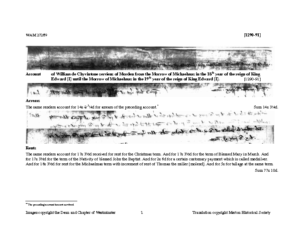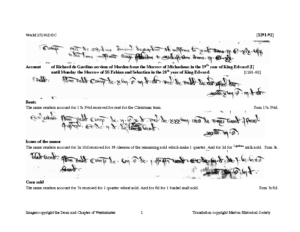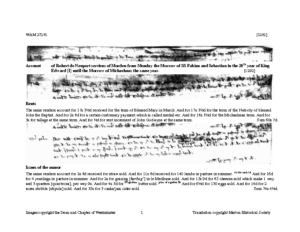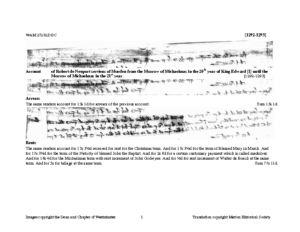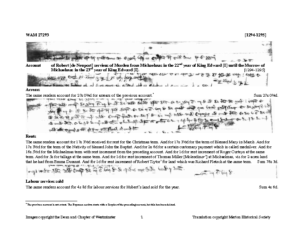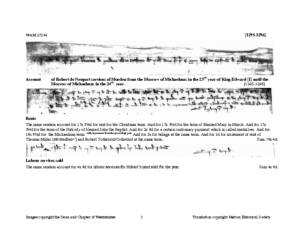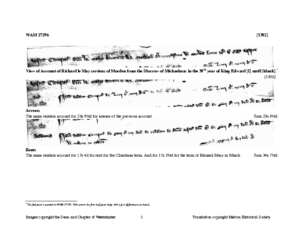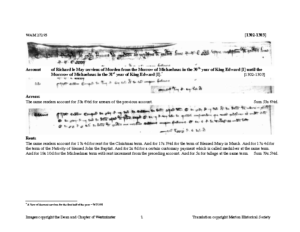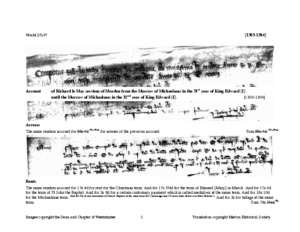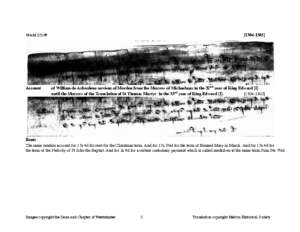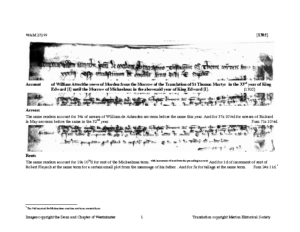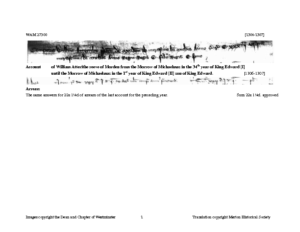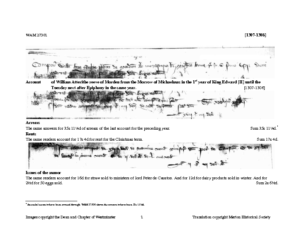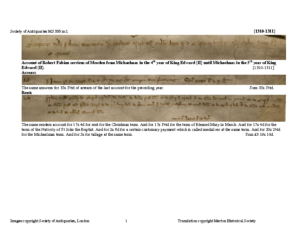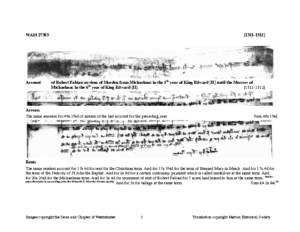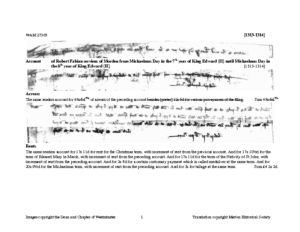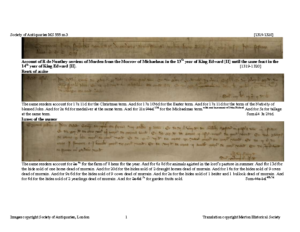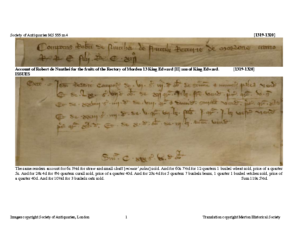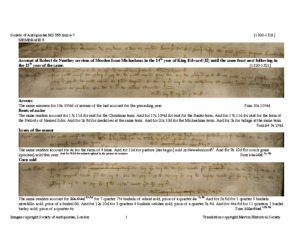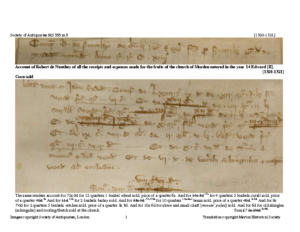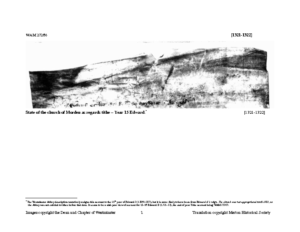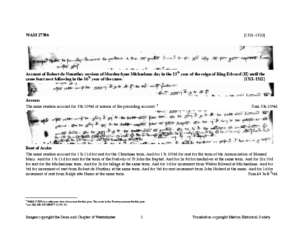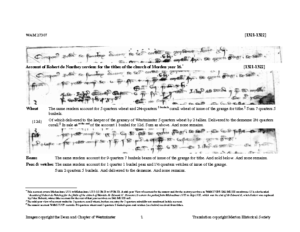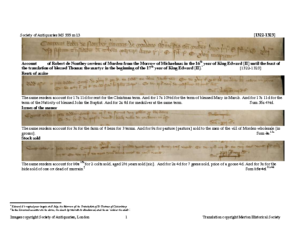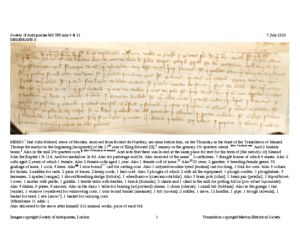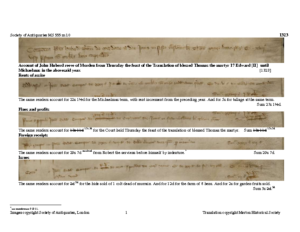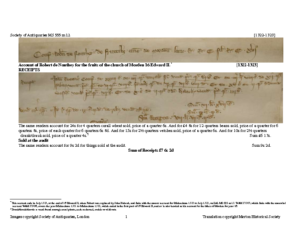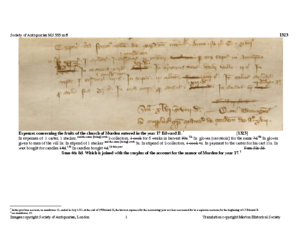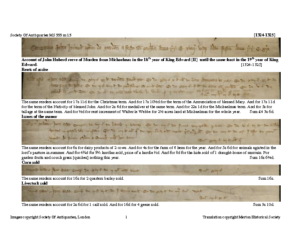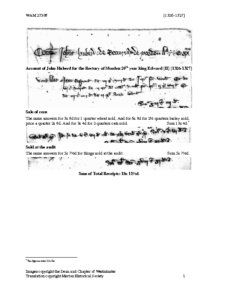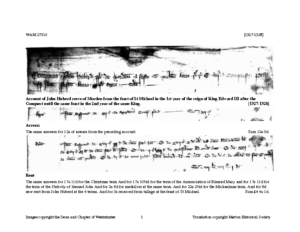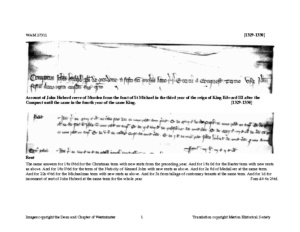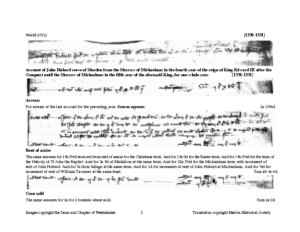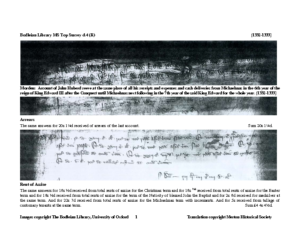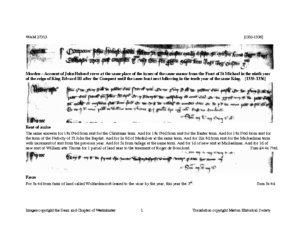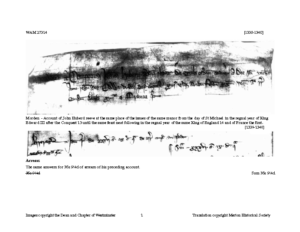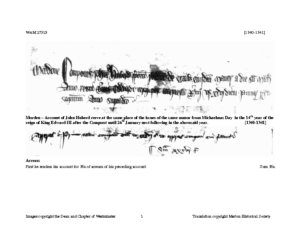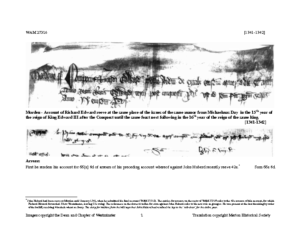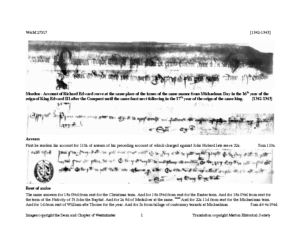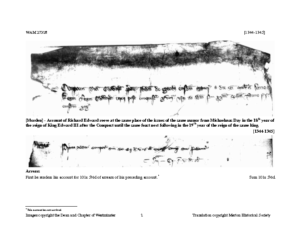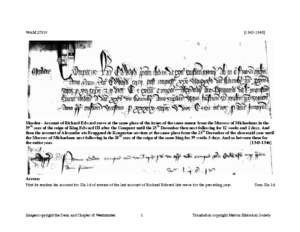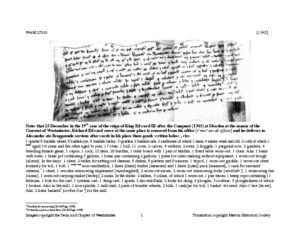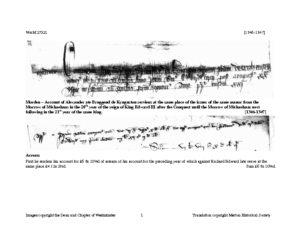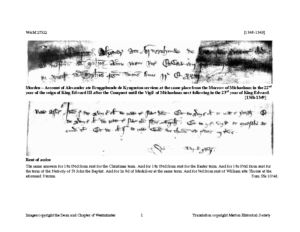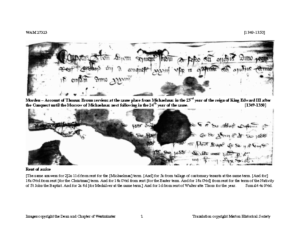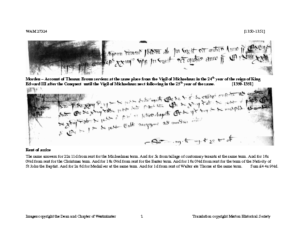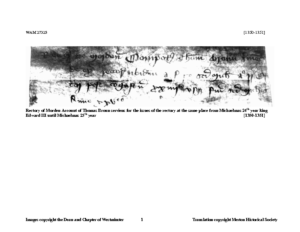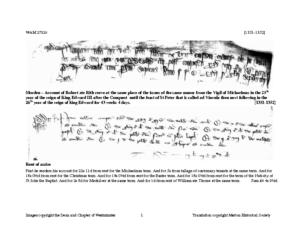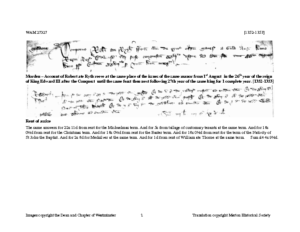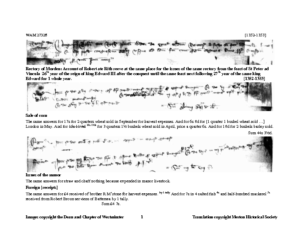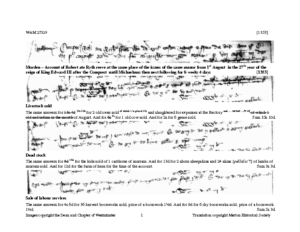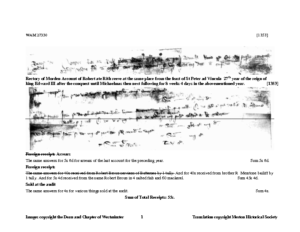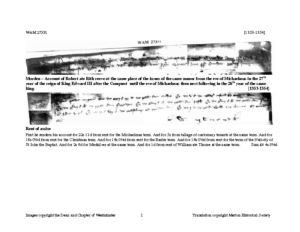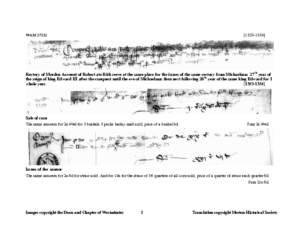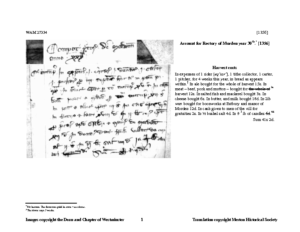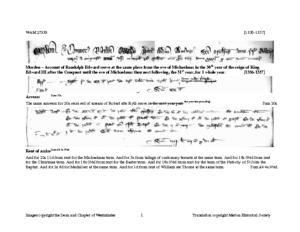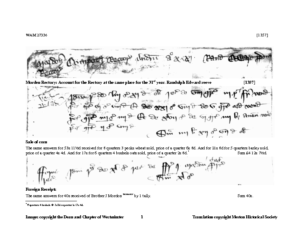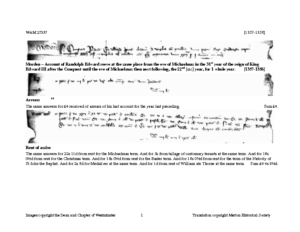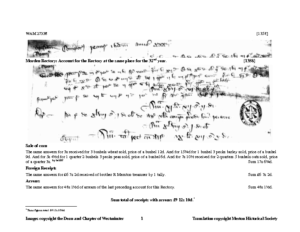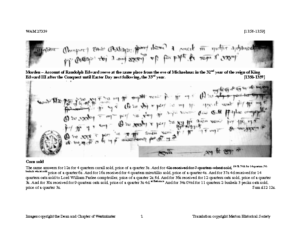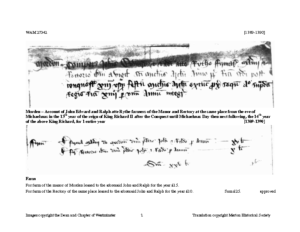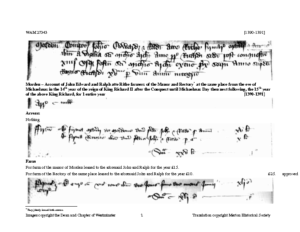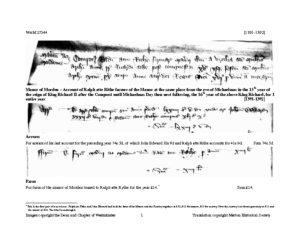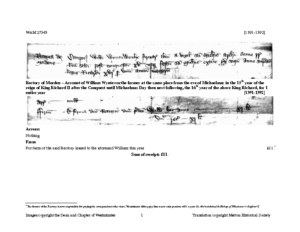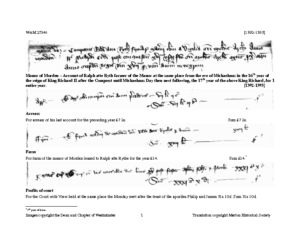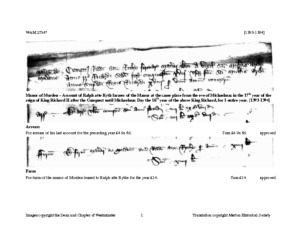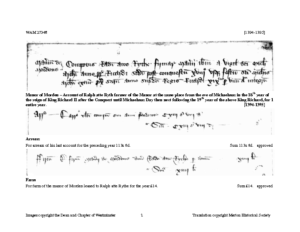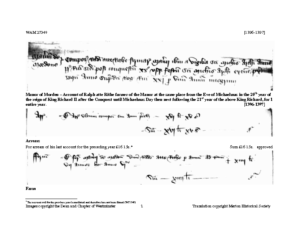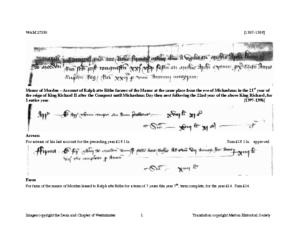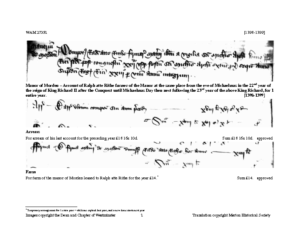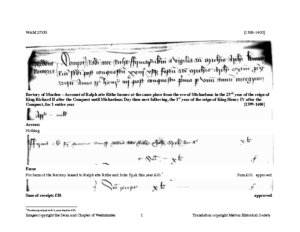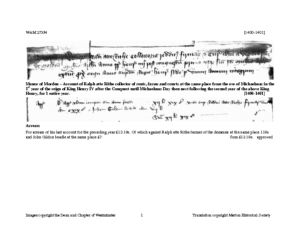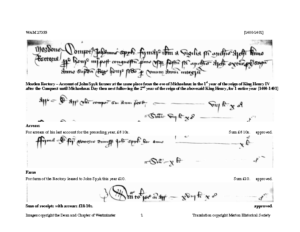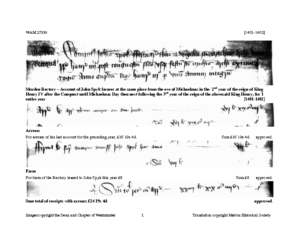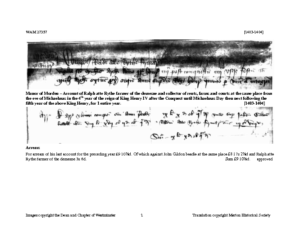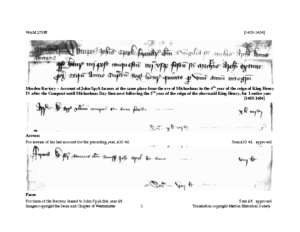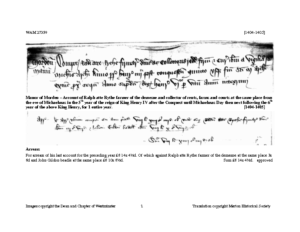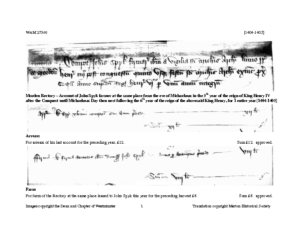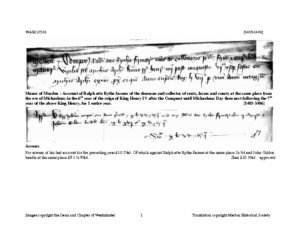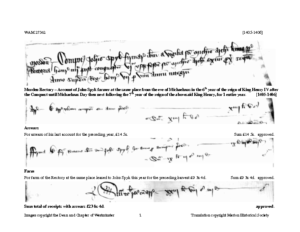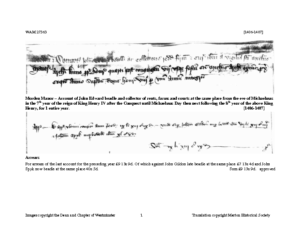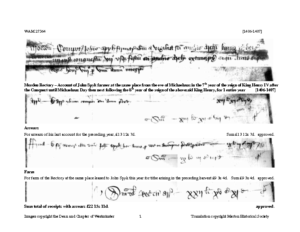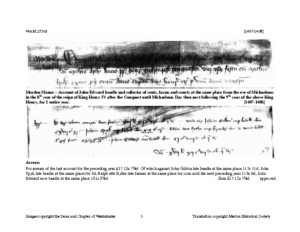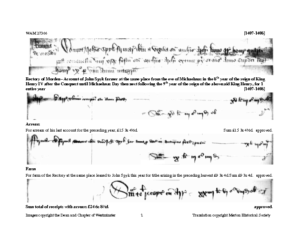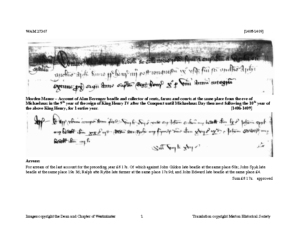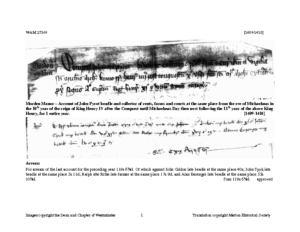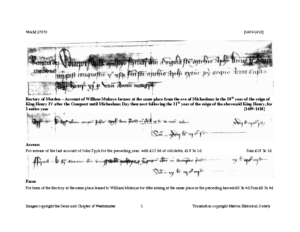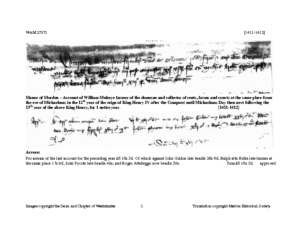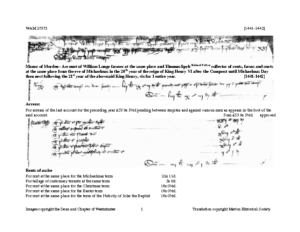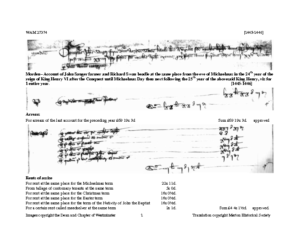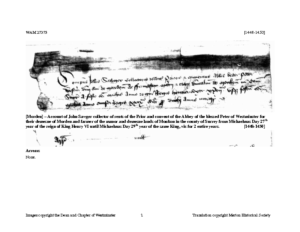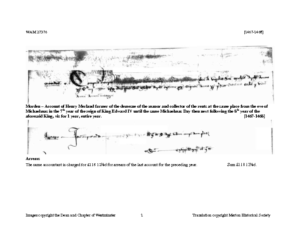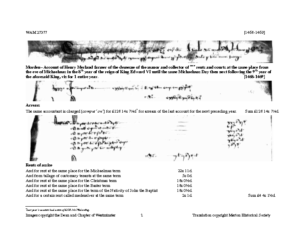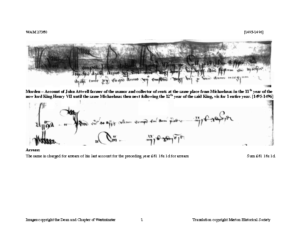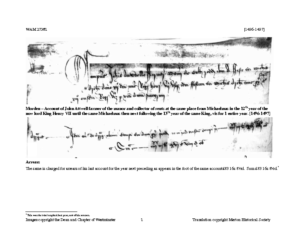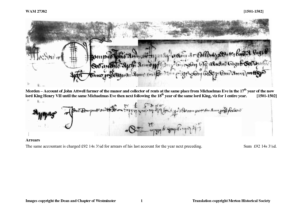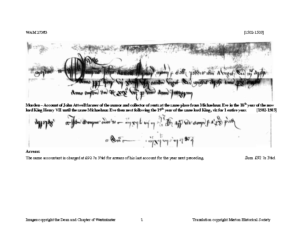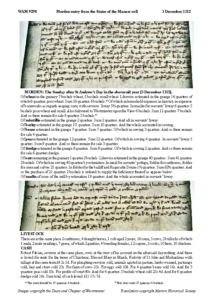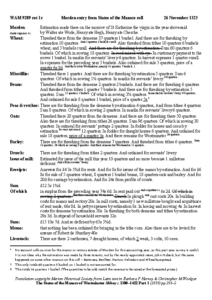Morden Manorial Account Rolls

WAM 27288 for June to September 1288, (c) The Dean and Chapter of Westminster
A major source of information for the study of the manorial economy is the sequence of manorial account rolls that begins in 1280. Though there are many gaps – no accounts survive for the period 1359-1387 or from 1412-1440, and only 11 thereafter – over 100 can be consulted at the Muniment Room (WAM), 15 at the Society of Antiquaries London (SAL), and one at the Bodleian Library in Oxford.
Where damage or staining makes an original document illegible, attempts have been made to fill in missing text wherever possible [in square brackets], using information found elsewhere within the roll, or from similar passages. Account rolls follow a standard format, and many entries under income and expenditure can be checked against grange and stock accounts on the dorse of the roll.
Some of these account rolls cover the rectory of Morden, which was appropriated by the abbey in 1301. In the links below, accounts relating to the manor are marked (M), those relating to the rectory (R), and those that include both (MR). Two mid-year ‘views of account’ for the manor are marked (Mv). Manor rolls that include inventories are marked (MI).
Click on the date buttons below to access the translations for each year, with or without images.
These rolls account for income and expenditure in cash and in stock, the latter usually occupying the dorse of the membrane. The following topics are covered by account rolls, though not all topics are covered at all periods:-
- INCOME: Arrears, Rents, Livestock sold, Dead stock sold, Sale of labour services, Issues of the manor, Profits of the Court, Debit of the account, Sum total receipts
- EXPENSES: Quittances and defaults of rent, Rents paid out, Cost of ploughs, Costs of carts, Building costs, Mill costs, Petty necessities, Threshing corn, Corn bought, Livestock bought, Hoeing and Mowing, Harvest costs, Stipends, Foreign expenses, Expenses of bailiff and visitors, Cash deliveries, Sum of all expenses and deliveries, Balance, Valuation
- ISSUES OF THE GRANGE: Wheat, Rye, Beans, Peas, Vetches, Barley, Dredge, Oats, Multure of the mill, Maslin for servants, Malt, Oatmeal
- LIVESTOCK ACCOUNT: Carthorses, Draught horses, Colts, Oxen, Bulls, Cows, Steers, Heifers, Bullocks, Young heifers, Calves, Wethers, Ewes, Hoggets, Gimmers, Lambs, Sows, Piglets, Young piglets, Geese, Swans, Ducks, Capons, Cocks and hens, Chickens, Eggs, Cheese, Bacon, White-tawed hides, Hides, Wool, Sheepskins, Fold hurdles
- WORKS ACCOUNT: Ploughing works, Dung-carrying services, Carrying services, Manual works, Harvest works, Harvest boonworks with lord’s food, Dry harvest boonworks, Sum of acres
The following rolls include inventories (I):- WAM 27294 (1296), WAM 27295 (1303), WAM 27300 (1307), SAL 1 (1311), SAL 9 & 11 (1323), WAM 27320).
WAM 27322 includes a separate list of tenements that came into the lord’s hands in 1349 as a result of the Black Death.
Enclosed with WAM 27354 is the ‘Onus’ or account of the beadle, John Gildon.
WAM 27309 and WAM 27923 were too fragile to film or consult.
Among Westminster Abbey’s central records are the annual States of the Manors rolls, all of which have been published in Barbara F Harvey & Christopher M Woolgar The States of the Manors of Westminster Abbey c.1300–1422 Parts 1&2 (The British Academy, 2019). Translations of the Morden section of the two earliest, and most detailed, such rolls have been included here – that for 1312, both with and without images, and that for 1323 – just the translation without images.
The translations are by Peter Hopkins under the guidance of Maureen Roberts, and countless extracts have been checked and corrected by Dr Mark Page.
 MERTON HISTORICAL SOCIETY
MERTON HISTORICAL SOCIETY 